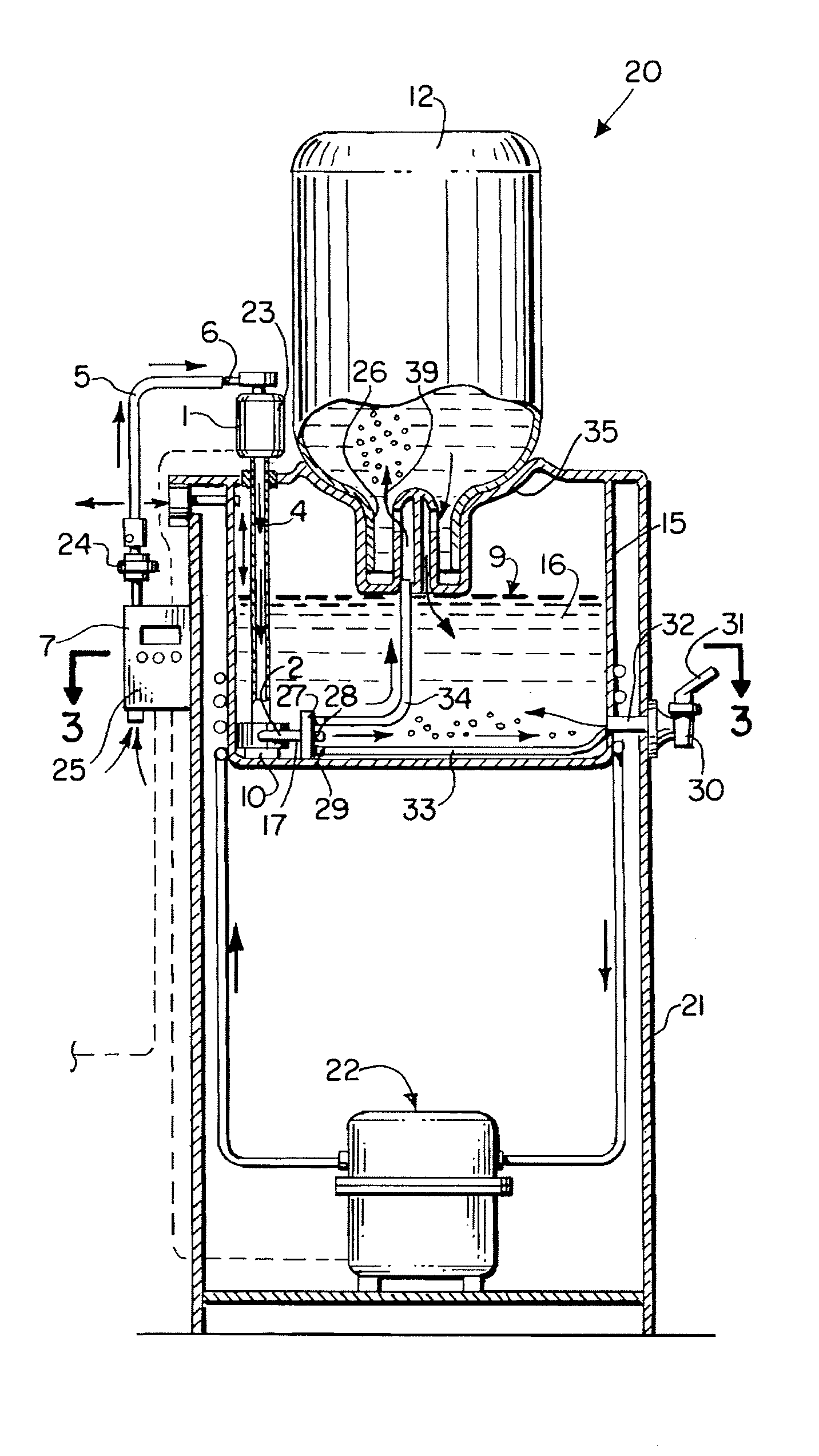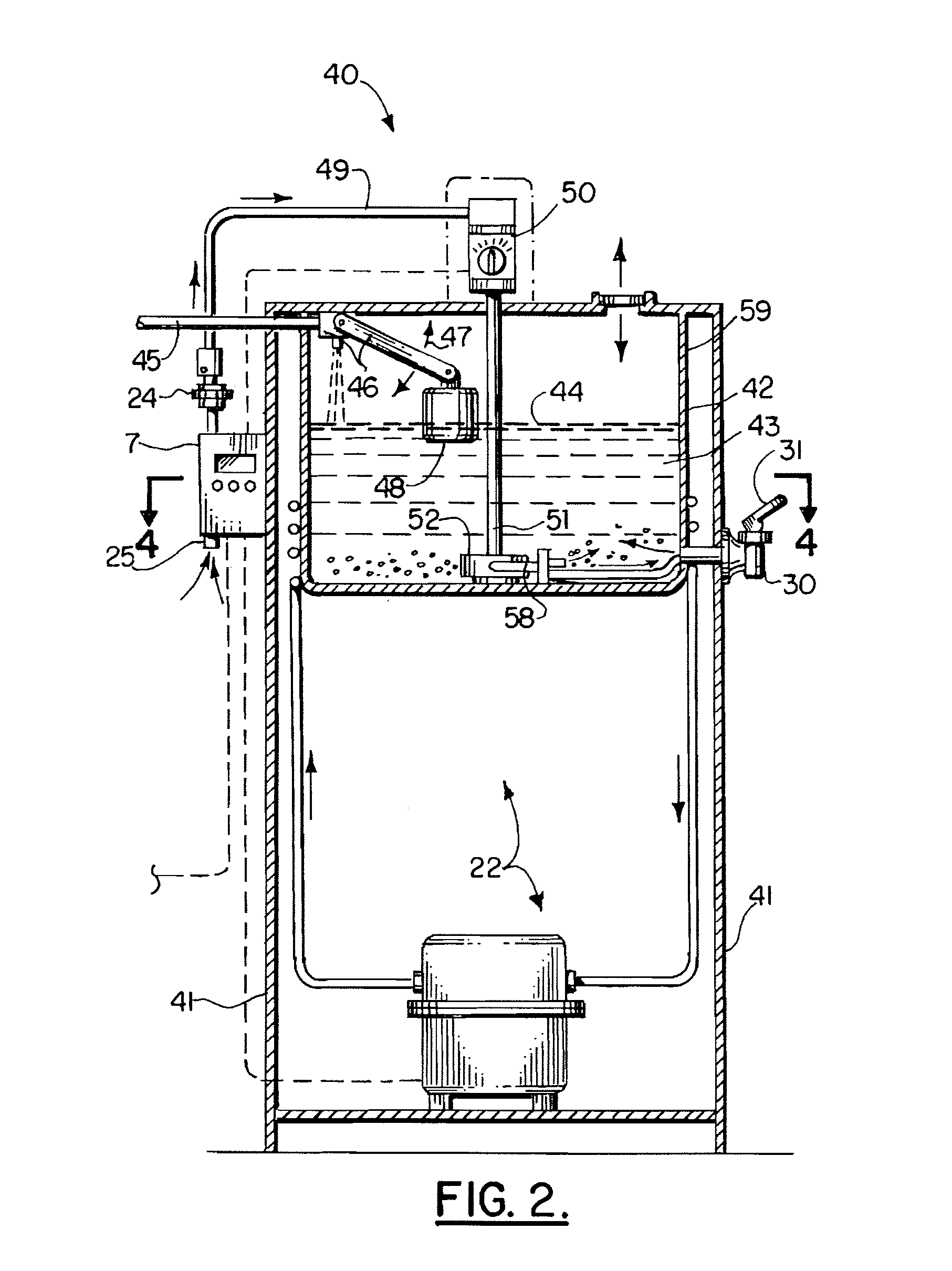Method and apparatus for sanitizing water dispensed from a water dispenser having a reservoir
a technology of water dispenser and reservoir, which is applied in the direction of liquid dispensing, special dispensing means, feed/dispense of settling tanks, etc., can solve the problems of inability to effectively transfer water from abbreviated water column to abbreviated water column, floods can occur in these devices, and conventional methods have not demonstrated themselves to be effective transfer means for low bubble rise velocity, etc., to break bubbles into very small pieces and break up ozone exiting the pump
- Summary
- Abstract
- Description
- Claims
- Application Information
AI Technical Summary
Benefits of technology
Problems solved by technology
Method used
Image
Examples
Embodiment Construction
[0066]Water dispenser 20 is shown in FIG. 1 as including cabinet 21 having a reservoir 15 for holding water 16 to be consumed by a user. Reservoir 15 has a sidewall and a bottom wall 19. Cabinet 21 can support a known, commercially available supply bottle 12 having neck outlet 26. Such a reservoir 15 containing water 16 is shown and described, for example, in U.S. Pat. Nos. 6,085,540; 6,389,690, and 6,532,760 each hereby incorporated herein by reference.
[0067]The present invention further provides an improved method for sanitizing drinking water to be dispensed from a water dispenser having a reservoir and further provides an improved water dispenser. Water dispenser 20 can be any known water dispensing device that typically uses a cabinet 21 that has reservoir 15 containing water 16. The cabinet 21 can include known electrical components, known refrigeration system 22 and other components that are known. Hollow drive shaft is contained within a cylindrically shaped housing section ...
PUM
 Login to View More
Login to View More Abstract
Description
Claims
Application Information
 Login to View More
Login to View More - R&D
- Intellectual Property
- Life Sciences
- Materials
- Tech Scout
- Unparalleled Data Quality
- Higher Quality Content
- 60% Fewer Hallucinations
Browse by: Latest US Patents, China's latest patents, Technical Efficacy Thesaurus, Application Domain, Technology Topic, Popular Technical Reports.
© 2025 PatSnap. All rights reserved.Legal|Privacy policy|Modern Slavery Act Transparency Statement|Sitemap|About US| Contact US: help@patsnap.com



